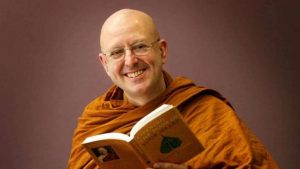
State authorities in the southwestern Chinese province of Sichuan have reportedly called a halt to demolition work at Larung Gar Buddhist Academy and suspended the expulsion of monastics as winter weather in the mountainous region deepens.
Demolition work was suspended “at the beginning of January,” an unidentified resident of the area was quoted as saying by Radio Free Asia. “However, we hear that it will begin again in April, and that this time it will be more aggressive and widespread. For now, things have calmed down considerably.”
In June last year, Sertar County officials issued an order stating that by October 2017 only 1,500 monks and 3,500 nuns would be allowed to live at the monastic college. The order follows similar moves in 2001, when the authorities organized a mass eviction of residents from the institute, and in late 2015, when further expulsions were accompanied by an order to reduce admissions to curb the rapid growth of the monastic population. The latest order did not give a reason for the decision, but cited two major central government meetings during which Chinese President Xi Jinping had stressed “national unity” and the necessity for religious groups to support the Communist Party and “merge their religious doctrines with Chinese culture.” (Los Angeles Times)
Reports of events at Larung Gar indicate that thousands of Tibetan and Han Chinese monks and nuns, and a handful of Western students, have been expelled from the wooden dwellings that once lined the hillsides around the academy. Media outlets report that evicted monks and nuns have been required to sign written pledges that they will not return to the religious center after they have been sent back to their hometowns. The number of students remaining at Larung Gar is unclear, however an unidentified source cited by radio Free Asia said that all monastics originally from the Tibet Autonomous Region (TAR) and the western provinces of Qinghai and Gansu had been removed and sent home. Meanwhile, hundreds of nuns from Tibetan-populated counties of Sichuan have reportedly been housed temporary camps in lieu of more permanent accommodation.
“Larung Gar’s annual exams will be held in the 12th month of the Tibetan Year [late January or early February], and we don’t know if the monks and nuns who have been expelled will be allowed to return to take part,” said the unidentified source. “When they were first sent away, they were told that they would be allowed to come back to take their exams.” (Radio Free Asia)
Larung Gar Buddhist Institute sits at an elevation of roughly 4,000 meters, some 14 kilometers from the town of Sertar. The nearest large city is Chengdu, about 640 kilometers away. The institute was founded in 1980 by the respected teacher Khenpo Jigme Phuntsok (1933–2004), a lama of the Nyingma school of Vajrayana Buddhism. Built in what was then an uninhabited valley, the academy grew to become perhaps the largest and most important center of Buddhist learning in the world. Before the latest move to limit the monastic population, an estimated 10,000 monks, nuns, and lay students lived in small wooden cabins on the hillsides surrounding the monastery complex, although some estimates put the number as high as 40,000. Khenpo Jigme Phuntsok, himself from Sertar, was born to a family of nomads, and at the age of two was identified as the reincarnation of Tertön Sogyal Lerab Lingpa (1856–1926). He was known for keeping a strict focus on Buddhism rather than politics at the institute.
According to some accounts, the main reasons given by the government for its actions at Larung Gar are to reduce overcrowding and to ensure public safety by renovating buildings. “It is common international practice to administrate religious sites in accordance with law,” The Chinese Embassy in London said in a statement. “[The local authorities] aim to maintain order in the temples, provide better public and social services to the temples and their monks and nuns, eliminate risks in areas such as public security, fire control and public health, and create a good environment for the monks and nuns who are practicing in accordance with law and in good earnest.” (International Business Times)

The site of Larung Gar was chosen by Khenpo Jigme Phuntsok because of its historical connection to the Vajrayana tradition. It is said that His Holiness the first Dudjom Rinpoche, Dudjom Lingpa (1835–1904) stayed here with his 13 disciples. The academy was conceived as an independent center of study that would help revitalize the Dharma and revive the study and practice of Tibetan Buddhism following China’s Cultural Revolution (1966–76), during which Tibetan Buddhism was suppressed and thousands of monasteries were destroyed. The institute has become renowned for the quality of both its religious and secular education. English, Chinese, and Tibetan languages and modern computer studies are taught alongside a traditional non-sectarian Buddhist curriculum. About 500 khenpos—holders of doctoral degrees in divinity—have studied at Larung Gar Buddhist Academy.
See more
Demolition, Expulsions Stop For Now at Larung Gar (Radio Free Asia)
For 2nd time in 15 years, Tibetan Buddhist academy in China faces demolition order (Los Angeles Times)
Chinese demolitions at Larung Gar Buddhist institute draw fire (Hong Kong Free Press)
Thousands of Tibetan monks and nuns threatened with forced eviction by China (International Business Times)
Related news from Buddhistdoor Global
State Authorities Cancel Annual Buddhist Ceremony at Larung Gar Institute
Government Workers Begin Demolishing Buildings at Larung Gar Buddhist Academy
Chinese Authorities Plan Major Reduction of Monastic Population at Larung Gar
Chinese Government Orders Larung Gar Buddhist Institute to Reduce Admissions
Larung Gar Nuns Push for Gender Equality in Tibetan Buddhism
Related features from Buddhistdoor Global
The Wonders of Kham and Larung Gar
The Wonders of Kham and Larung Gar, Part Two













